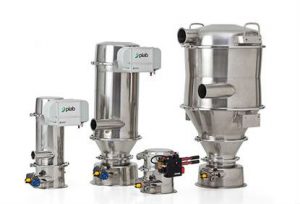 How to avoid segregation in vacuum conveying, according to piab
How to avoid segregation in vacuum conveying, according to piab
September 14, 2018 REDWIRE is news you can use from leading suppliers. Powered by FRASERS.
Posted by Firing Industries Ltd
The business objective of FIRING INDUSTRIES LTD. is to consult with clients to select and supply technically complex PRO... Read more
Subscribe
Free REDWIRE e-newsletter

piab is a major innovator and expert in vacuum conveying technology.
Firing Industries supplies top industrial processing equipment in Canada with the assistance of top international manufacturers – one of which is piab, a major innovator in vacuum conveying technology for the food-processing and pharmaceutical sectors. One of the challenges of vacuum conveyance is material segregation, or the separation of ingredients resulting in uneven mixtures.
In a recent white paper, piab discusses how food-processing and pharmaceutical companies can approach and overcome the challenge of segregation in vacuum conveying.
A variety of factors
According to piab, segregation of materials during material transfer depends on a variety of factors. These include: particle size, shape, and density; transfer speed; angle; length of conveying distance; and static electricity. Sifting can also cause particle separation in air-stream conveying. This is an issue that can affect production significantly, interfering with the ingredient mixture or the the powder-to-powder ratio, which results in poor quality and/or wasted materials.
Since every segregation issue is unique and each mixture is unique, users of vacuum conveying equipment must tailor their solutions to the individual situations. This is especially important for manufacturers of potentially hazardous goods, such as pharmaceutical drugs, which may cause dire consequences if processed improperly.
The first step in tackling segregation is empirical testing: companies producing delicate or dangerous goods must test their mixes on a regular basis to ensure quality and proper content. Next, the conveying line should be assessed, including testing how different variables affect material transfer. Controlled speed is often the key; low conveyance speed and denser phase conveying produce better results.
In one case, a piab client was conveying six tons of powder per hour in manufacturing antacid tablets. But the citric acid, calcium carbonate, and other ingredients were segregating during high-speed conveyance. piab tested the company’s conveying process with different variables like speed and distance – and solved the issue simply by lowering the speed.
piab is currently developing a constant-speed conveyor to address similar segregation concerns. With Firing Industries’ help, Canadian manufacturers will continue get access to this company’s innovative equipment.
To learn more, contact Firing Industries’ application-sales engineers at ddubuc@firing.com or (877) 688-0974.
Share
Posted by Firing Industries Ltd
The business objective of FIRING INDUSTRIES LTD. is to consult with clients to select and supply technically complex PRO... Read more
